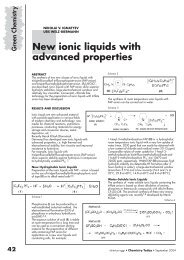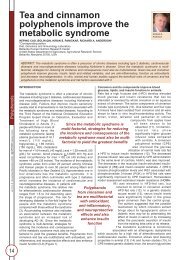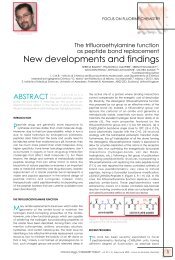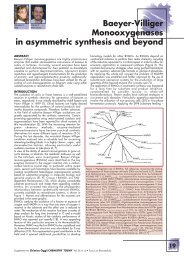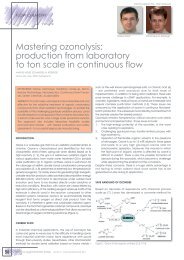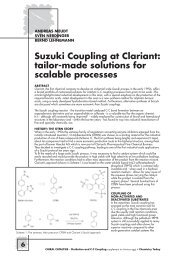Lake Como 2|4 October 2011 - CHIMICA Oggi/Chemistry Today
Lake Como 2|4 October 2011 - CHIMICA Oggi/Chemistry Today
Lake Como 2|4 October 2011 - CHIMICA Oggi/Chemistry Today
You also want an ePaper? Increase the reach of your titles
YUMPU automatically turns print PDFs into web optimized ePapers that Google loves.
SPEAKER SPEAKER SPEAKER SPEAKER SPEAKER SPEAKER SPEAKER SPEAKER SPEAKER SPEAKER SPEAKER SPEAKER SPEAKER SPEAKER SPEAKER SPEAKER SPEAKER SPEAKER SPEAKER SPEAKER SPEAKER SPEAKER SPEAKER SPEAKER SPEAKER SPEAKER SPEAKER SPEAKER SPEAKER SPEAKER SPEAKER SPEAKER SPEAKER SPEAKER SPEAKER SPEAKER SPEAKER SPEAKER SPEAKER SPEAKER SPEAKER SPEAKER SPEAKER SPEAKER SPEAKER SPEAKER SPEAKER SPEAKER SPEAKER SPEAKER SPEAKER SPEAKER SPEAKER SPEAKER<br />
ABSTRACT<br />
BIOGRAPHY<br />
Franz Amann<br />
Ozonolysis in a micro reactor system<br />
Franz Amann<br />
Dishman Group - Switzerland<br />
Amann’s expertise is built on more than 12 years working within the pharmaceutical industry.<br />
The majority of them with CARBOGEN AMCIS (part of the Dishman Group) where he started<br />
as project chemist after completing his doctoral degree.<br />
Later on he was appointed as Scientifi c Specialist, where he assumed responsibilities working<br />
in synthesis of APIs under cGMP, process optimization, carbohydrate chemistry and micro<br />
reactor technology (MRT).<br />
One of the focuses of Amann’s work on MRT is Dishman Group unique device for<br />
continuous ozonolysis.<br />
Dr Amann holds a master’s degree in <strong>Chemistry</strong> from the University<br />
of Constance, Germany where he also obtained a PhD degree<br />
through his thesis on: “Synthesis and investigation of donor-analogue<br />
glycosyl transferase-inhibitors“.<br />
Dishman (Innovative Ozone Systems/Carbogen Amcis) is working with a proprietary device for continuous ozonolysis based on a<br />
micro reactor set-up.<br />
Although the reactions are run under pressure the fl ow chemistry approach delivers safety advantages due to the prevention of<br />
accumulation of ozonides.<br />
The technical set-up and several chemical examples will be discussed. In most cases, the ozonolysis itself works satisfactory but the<br />
ozonide processing in semi-batch mode had to be adapted to the requirements of the continuous device.<br />
Continuous and batch wise production gave comparable results with regard to yield and quality.<br />
6<br />
<strong>Lake</strong> <strong>Como</strong><br />
<strong>2|4</strong> <strong>October</strong> <strong>2011</strong>



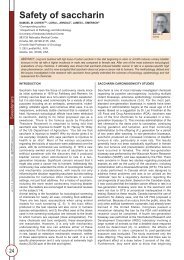
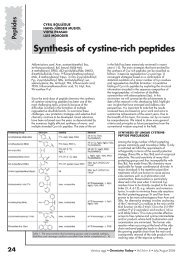
![Pietro Delogu [modalità compatibilità]](https://img.yumpu.com/12255149/1/190x135/pietro-delogu-modalita-compatibilita.jpg?quality=85)
